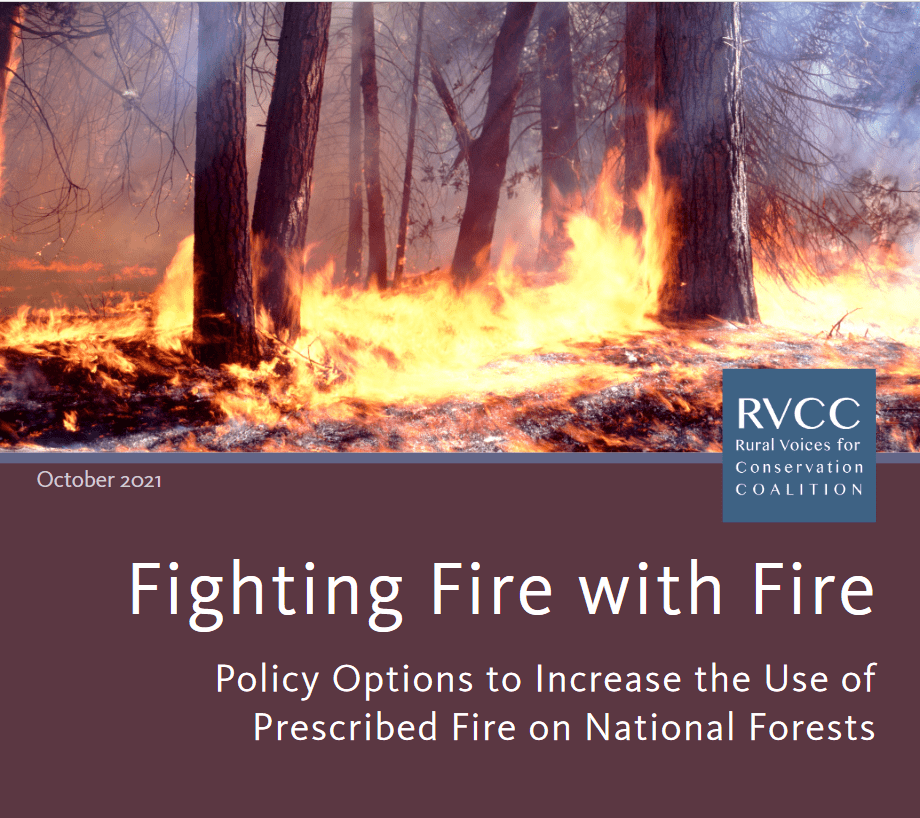As usual, the folks at RVCC have come up with a thoughtful and experience-based report, this one called Fighting Fire With Fire.
I was reminded of this section by our discussion around the Pisgah-Nantahala Forest Plan and timber targets.
P O L I C Y O P T I O N S :
PERFORMANCE MEASURES AND BUDGETING
• Immediate action can be taken by elevating the existing “acres mitigated” KPI to a principal target on par with the two existing timber volume and acres treated targets. “Acres mitigated” is a better measure of the comprehensive action needed to reduce fire risk on one footprint acre than the current “acres treated” target. While any annual output target still suffers from the risk of prioritizing the easiest acres for treatment, use of the existing “acres mitigated” KPI would serve as a good bridge to more outcomes-based performance measures.• Deprioritize the core performance measure of “timber volume sold.” This metric has long guided agency budget allocation and has been used as a benchmark of individual employee career success. While the agency tracks many KPIs, the timber volume target plays a disproportionate role in agency behavior. Addition of new KPIs is insufficient to motivate agency change without also relaxing the timber volume target. Furthermore, the timber volume target should not be conflated with a fire risk reduction outcome.
• Incentivize exceeding fuels reduction targets. So long as annual output targets remain in effect, performance measurement systems – and accompanying budget impacts – should incentivize overperformance, not penalize it. Currently, if a unit exceeds a fuels reduction target, they are expected to perform to the same advanced level in future budget years, essentially disincentivizing innovation and excellence. Performance above target could be rewarded with additional funding.
• The Forest Service should work with the Office of Management and Budget and key external partners to propose new outcomes-based targets that capture the complex, modern
mission of the agency. While outcome measures are more difficult to achieve than simpler annual output targets, there are models for such practices already in existence (see on-the-ground example below).
Here’s the example:
The Colorado Forest Restoration Institute has led participatory mapping to develop fire risk reduction maps that balance multiple values and account for local concerns and knowledge. Such a process could form the core of an outcomes-based performance measure. Agency performance could be evaluated based on annual reports from the agency to local stakeholders demonstrating accomplishments based on priority maps, showing progress towards locally determined goals. Such a performance measure would serve to provide accountability to local stakeholders as well as agency leadership and Congress.
*********************************************
These raise three questions in my mind.
1. What would “deprioritizing” timber targets look like in practice? Are FS employees more accountable for them than other KPIs? How accountable are employees in meeting any kinds of targets? Which reminded me of the Mills Accountability Report. I couldn’t find it, but I did find this… in this GAO report from 2003.
Forest Service Has Made Little Progress in Resolving Known Performance Accountability Problems, unlike Other Federal Land Management Agencies.
On another issue, some retirees have questioned how management reviews are conducted nowadays compared to say the BLM.
2. As Jon reminds us, these are national forests, not locally managed, so the idea of local outcome-based performance measures might not fit with (powerful) groups that support the more nationalized policy view.
3. How could you meaningfully accumulate those measures in a report to Congress? I’m not saying it couldn’t be done, but this seems like the old “consistency vs. decentralization” tension. Ideas?

Kudos for actually focusing on the program/budget/performance process as the source of many of the conflicts and pressures the agency has to deal with (as opposed to say laws, litigation or courts). However, while they recognize that much of this solution would require Congressional action, the answer to your question #1 depends on Congress changing the way it thinks about the timber program, and this report doesn’t have much to say about that. As long as those in Congress with national forests in their districts view national forest outputs as a way to get local votes by supposedly creating local jobs (and they tell local managers that directly, and threaten agency budgets), these managers are likely to view these output targets as more important than others. (It does seems like safety should be at least as important as jobs at getting votes though.)
I’m not connecting this issue to my concern about attempts at “local control” of national forest management. I actually think the concept of fire hazard risk reduction is similar to wildlife habitat improvement; outcomes are more important than acres treated in both cases. In fact, these proposals actually fall a little short – fuel treatment accounting should focus on values at risk protected rather than “acres mitigated.” (Local knowledge is important to figuring that out.)